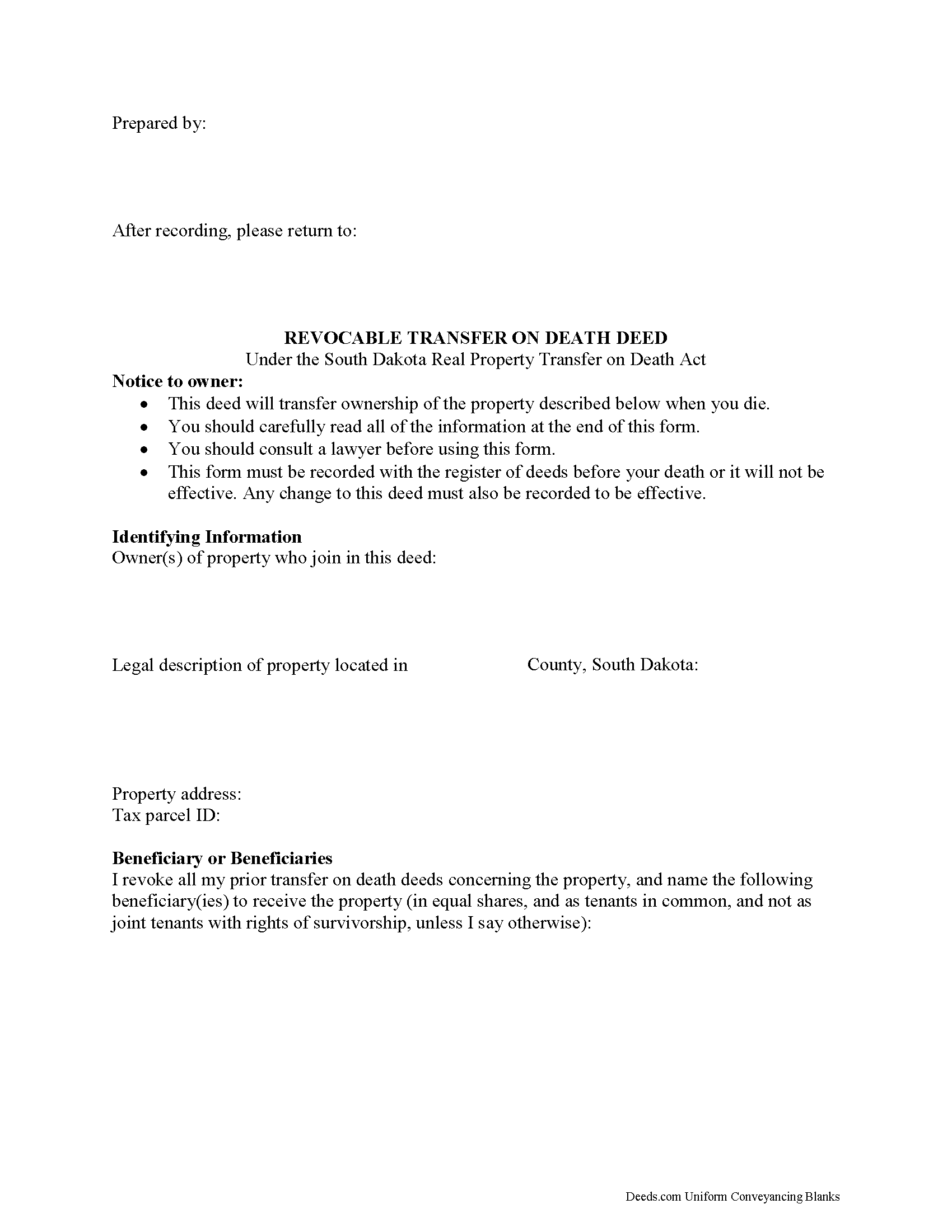Download South Dakota Transfer on Death Deed Legal Forms

South Dakota Transfer on Death Deed Overview

As of July 1, 2014, owners of real estate in South Dakota have access to a new estate planning tool: the transfer on death deed (TODD). Find the full text of the South Dakota Real Property Transfer on Death Act at 29A-6-401 of the South Dakota Codified Laws.
The statute is based on the Uniform Real Property Transfer on Death Act (URPTODA). In addition to South Dakota, a growing number of states are choosing to adopt the provisions of the URPTODA. The new law allows landowners to direct the distribution of what is often their most significant asset, their real estate, with a correctly executed and recorded transfer on death deed.
Standard conveyances such as warranty or quitclaim deeds, when executed, define permanent transfers of ownership. Deeds under URPTODA, however, are revocable (29A-6-405). Transferors under this law may sell, mortgage, rent, or otherwise use the property in any way they wish; TODDs only contain a potential future interest (29A-6-414(1)). They provide owners with the flexibility to accommodate changing circumstances by modifying or even cancelling the recorded transfer. This is possible because TODD beneficiaries have absolutely no rights to or interest in the property while the owner is alive (29A-6-414(5)). In addition, the beneficiary pays nothing to the owner for the potential future interest, and the owner is not obligated to inform the beneficiary about the transfer (29A-6-409).
Transfer on death deeds are nontestamentary, which means title to the property passes to the beneficiary without instructions in a will or the need for probate distribution (29A-6-406). Unnecessary conflicts are likely to add confusion and expense to what is often a difficult time, so landowners should take care to ensure that their wills and TODDs lead to the same outcomes.
South Dakota's version of the URPTODA sets out the specific requirements for lawful transfer on death deeds at 29A-6-408. TODDs must:
- contain the essential elements and formalities of a properly recordable "traditional" deed as required by the standards of title;
- state that the transfer to the designated beneficiary is to occur at the transferor's death; and
- be recorded before the transferor's death in the public records in the office of the register of deeds in the county where the property is located.
In general, the beneficiary must be alive at the time of the transferor's death or the interest returns to the estate (29A-6-415(2)). To prevent this from happening, the owner may identify one or more contingent beneficiaries. Beneficiaries take title subject to any obligations (contracts, easements, etc.) associated with the property when the transferor dies (29A-6-416).
With the new transfer on death deeds, real property owners in South Dakota have gained a convenient, flexible option for managing one aspect of a comprehensive estate plan. Even so, a TODD may not be appropriate for everyone. Since each situation is unique, contact an attorney with specific questions or for complex circumstances.
(South Dakota TODD Package includes form, guidelines, and completed example)